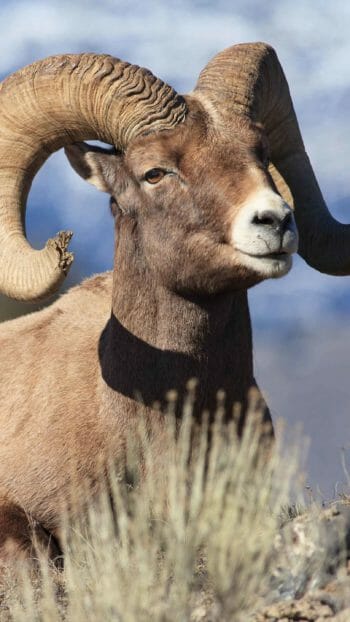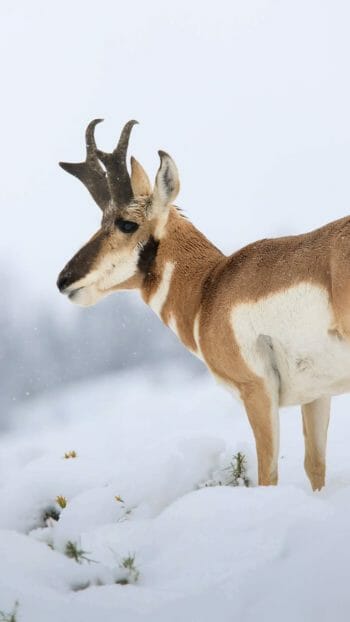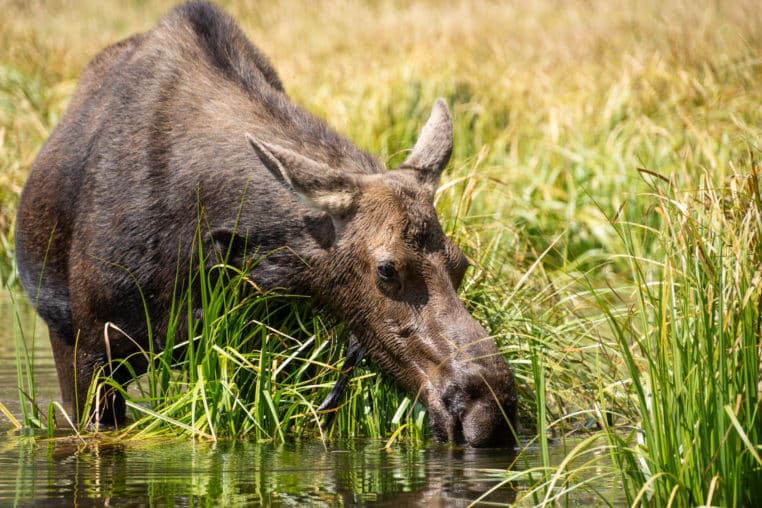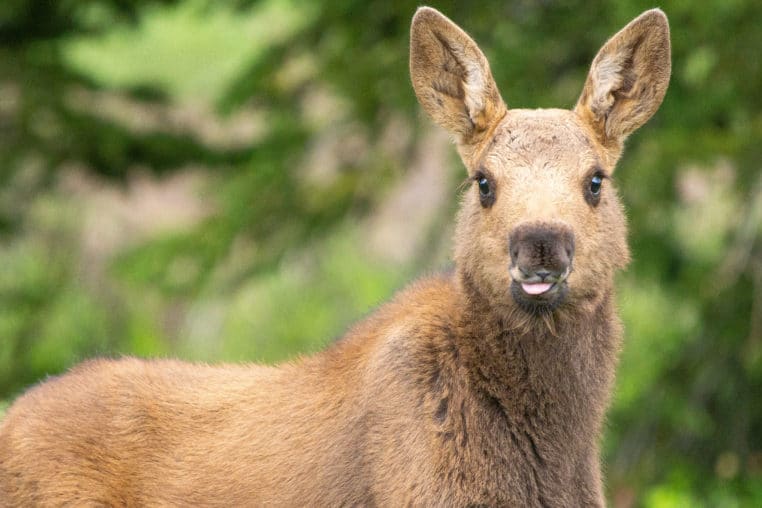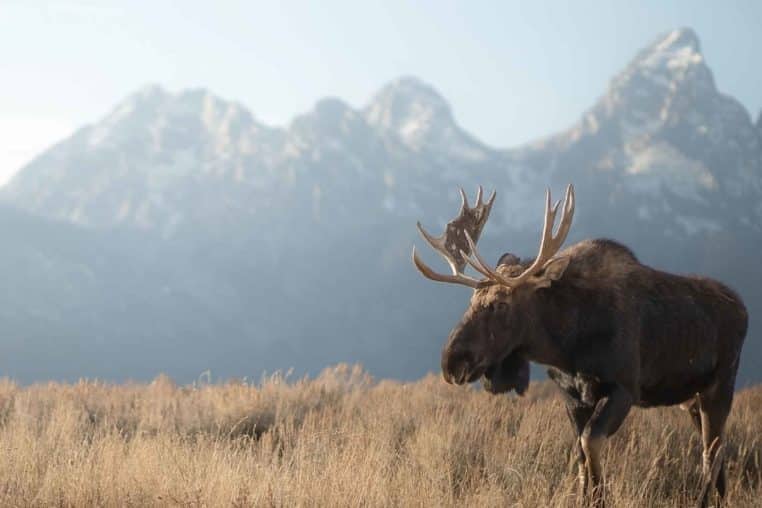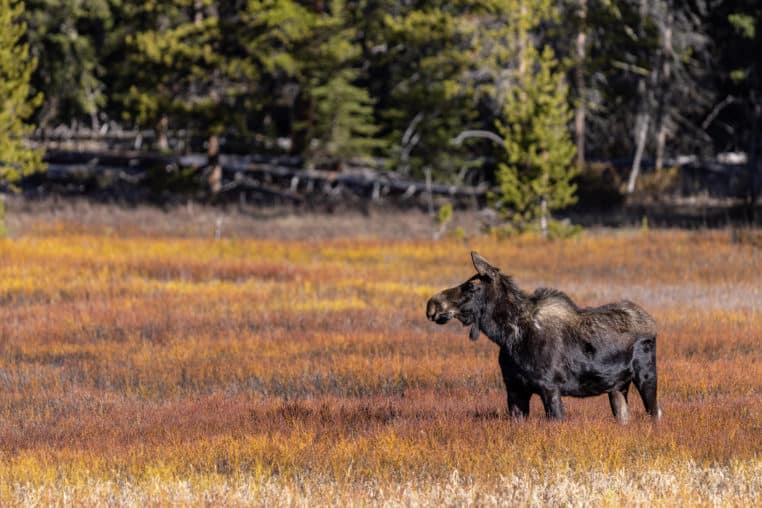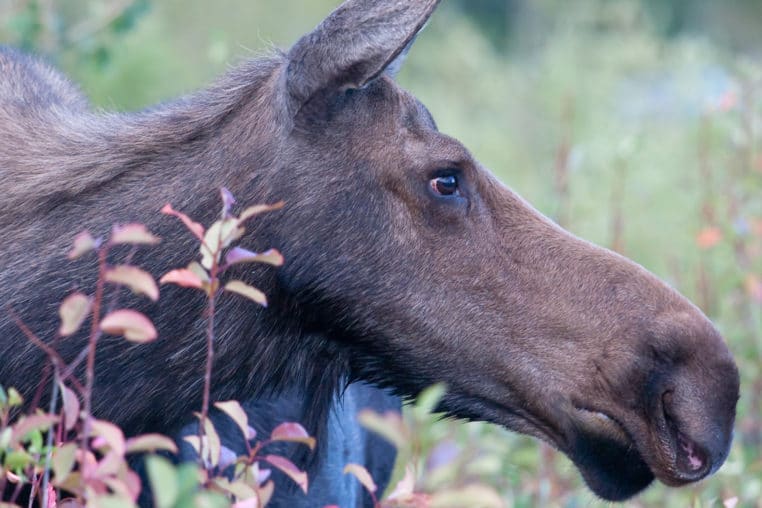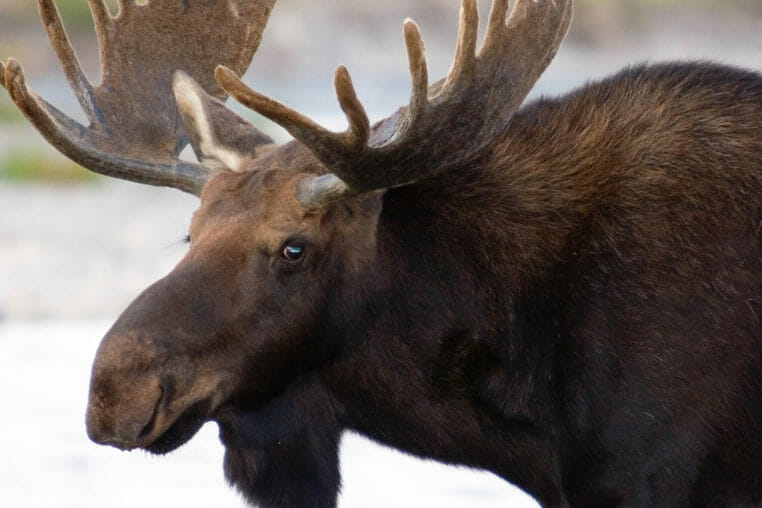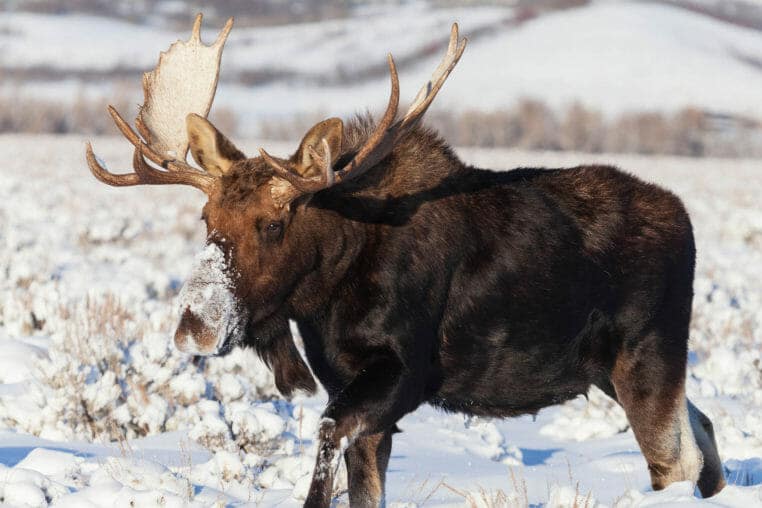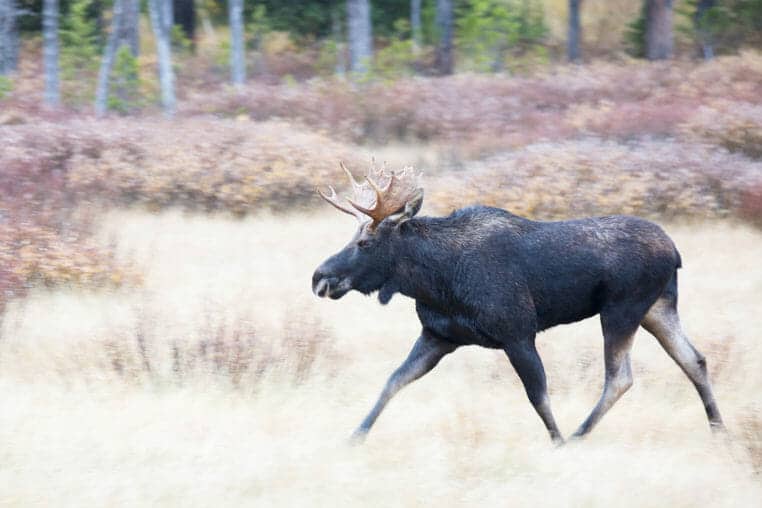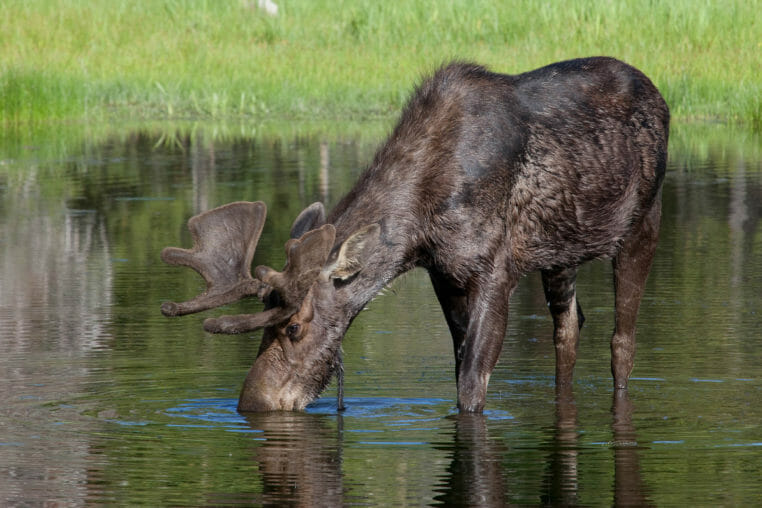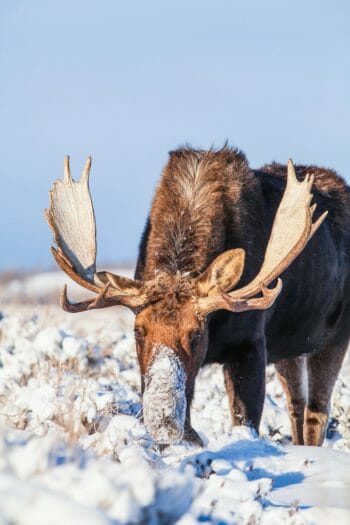
Alces alces
Moose are the largest members of the deer family and one of the most distinctive animals in the Greater Yellowstone Ecosystem. Of the four subspecies of moose found in North America, the Shiras moose, the smallest subspecies in North America, lives in the Greater Yellowstone Ecosystem. Even so, these giants can stand six feet at the shoulder and weigh almost 1,000 pounds.
Wildlife Viewing
- Yellowstone
Book Online
Watch For Wildlife On These Tours
About
Built for the Cold
Moose thrive in northern climates thanks to their high body temperature and dark, heat-absorbing coats. Unlike elk and bison, they do not graze on grasses. Instead, moose are browsers, feeding on shrubs and trees such as willow and aspen. To balance their diet, they also consume aquatic vegetation rich in sodium, which is why moose are often seen wading in ponds and streams.
Water Adaptations
Moose are semi-aquatic and well adapted to life in wetlands. They can close their nostrils to feed underwater and are powerful swimmers, capable of maintaining six miles per hour for hours at a time. Water not only provides food but also helps them cool off during summer.
The Rut and Antlers
Bull moose grow massive antlers each summer, sometimes spanning six feet across. Covered in velvet while growing, these antlers are fully formed by fall when the rut begins. During September and October, bulls challenge rivals in dramatic battles for breeding rights, clashing antlers with incredible force.
Calving
Moose give birth in June, usually to a single calf but sometimes twins. Calves are born reddish in color and quickly develop darker coats. Moose mothers are fiercely protective of their young and will aggressively defend them from predators.
Best Times to See Moose
Moose are relatively rare in Yellowstone, with fewer than 100 individuals. Grand Teton National Park offers better opportunities, with around 400 moose in prime wetland and river habitats. Look for them at dawn and dusk near streams and ponds in summer. In October, the rut makes moose more visible, often near roadways. During winter, they move into open sagebrush flats, making them easier to spot.
FAQs
Where is the best place to see moose in Yellowstone and Grand Teton?
Moose are relatively rare in Yellowstone, with fewer than 100 individuals, but Grand Teton National Park is one of the best places to see them. Around 400 moose live in wetlands and river corridors, particularly along the Snake River, willow flats, and pond edges.
When is the best time of year to see moose?
Moose can be seen year-round, but the best seasons are summer and fall. In summer, they often wade into ponds and streams to feed on aquatic vegetation. In October, the rut brings bulls into the open, making them more visible near roadways and meadows. In winter, moose move into sagebrush flats, where sightings are also common.
How big do moose antlers get?
Bull moose grow massive antlers each year, sometimes spanning up to six feet across. They are covered in velvet during summer which sheds by fall, exposing the bare bone of the antlers, used during the rut for displays of dominance and dramatic battles with rivals.
What do moose eat?
Unlike elk and bison, moose are browsers rather than grazers. They feed on shrubs and trees such as willow and aspen, as well as aquatic plants rich in sodium like duckweed and algea. Their diet often takes them into wetlands, where they can close their nostrils to feed underwater.
Are moose dangerous to humans?
Yes, moose can be dangerous if approached too closely. Cows are extremely protective of their calves, and bulls become aggressive during the rut. Moose may charge if they feel threatened, so it’s important to keep a safe distance and observe them respectfully when visiting Yellowstone or Grand Teton.
Further Reading
Yellowstone National Park Animals
Apr 8, 2023
Yellowstone National Park wildlife is world-renowned. There are few places in the world where you can watch grizzly bears forage with their cubs or a gray wolf pack hunting a herd of elk. You may have heard of “The Big Five,” which includes the lion, elephant, buffalo, leopard, and rhinoceros. Yellowstone has its own Big Five: the gray wolf, bison, bear, elk, and moose…
Lamar Valley Yellowstone: A Wildlife Watcher’s Paradise
Aug 12, 202
Tucked into the northeastern corner of Yellowstone National Park lies one of the most wildlife-rich landscapes in North America—Lamar Valley. Often called “America’s Serengeti”, this expansive valley is celebrated for its sweeping views, abundant animal sightings, and exceptional opportunities for nature photography…

